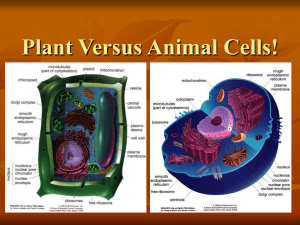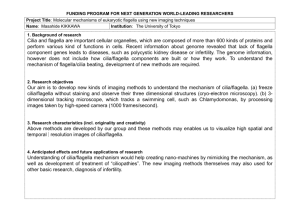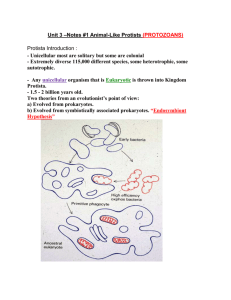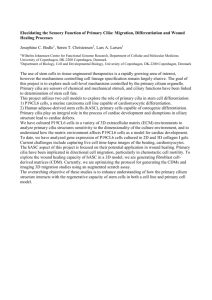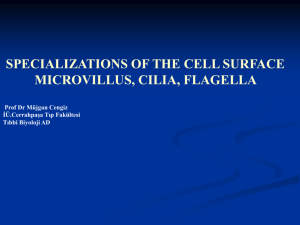Script
advertisement
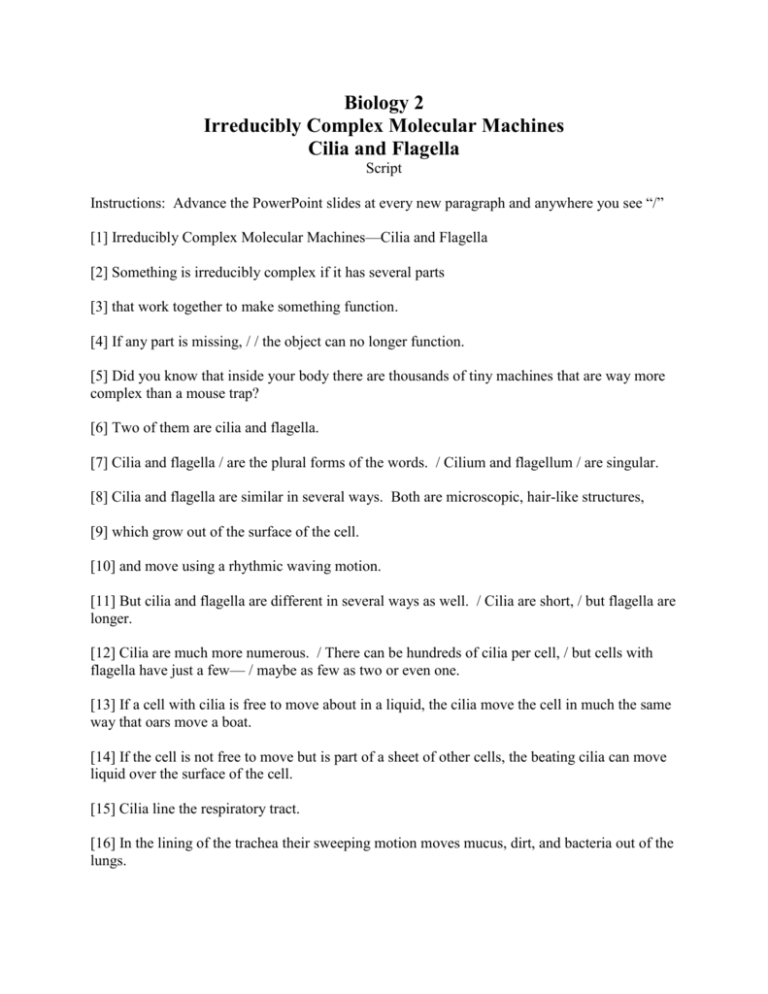
Biology 2 Irreducibly Complex Molecular Machines Cilia and Flagella Script Instructions: Advance the PowerPoint slides at every new paragraph and anywhere you see “/” [1] Irreducibly Complex Molecular Machines—Cilia and Flagella [2] Something is irreducibly complex if it has several parts [3] that work together to make something function. [4] If any part is missing, / / the object can no longer function. [5] Did you know that inside your body there are thousands of tiny machines that are way more complex than a mouse trap? [6] Two of them are cilia and flagella. [7] Cilia and flagella / are the plural forms of the words. / Cilium and flagellum / are singular. [8] Cilia and flagella are similar in several ways. Both are microscopic, hair-like structures, [9] which grow out of the surface of the cell. [10] and move using a rhythmic waving motion. [11] But cilia and flagella are different in several ways as well. / Cilia are short, / but flagella are longer. [12] Cilia are much more numerous. / There can be hundreds of cilia per cell, / but cells with flagella have just a few— / maybe as few as two or even one. [13] If a cell with cilia is free to move about in a liquid, the cilia move the cell in much the same way that oars move a boat. [14] If the cell is not free to move but is part of a sheet of other cells, the beating cilia can move liquid over the surface of the cell. [15] Cilia line the respiratory tract. [16] In the lining of the trachea their sweeping motion moves mucus, dirt, and bacteria out of the lungs. [17] Flagella are amazing little swimming devices which are found on sperm cells. / They are also found, with a slightly different structure, on bacteria. [18] The flagellum is the tail-like structure at the end of this bacterium. Compared with the rapid movement of cilia, the motion of the flagellum is comparatively slow and more wavelike. (And just in case you were wondering, the many little hair-like things on the cell itself are not cilia. They are other hair-like projections that are not involved in the movement of the bacterium.) [19] Even though cilia and flagella may look like simple little hairs, each one is actually a complex machine with multiple moving parts. [20] Cilia and many flagella have a similar structure. Each is a bundle of fibers / covered by a membrane. Each cilium or flagellum is made up of 9 pairs of rods—called microtubules— around the edge. [21] Each of the 9 pairs consists of 2 fused rings. / One has 13 strands, and the other has 10 strands. / There are two more unfused rods in the center. Various proteins connect all these pieces together. [22] Cilia and the flagella on sperm cells contain proteins called dynein arms / that reach out from one pair of microtubules to the next. [23] By pulling and releasing, these arms cause the cilia or flagella to bend back and forth, which is what propels the cell along. There can be 4,000 dynein proteins on just one cilium! [24] Flagella found on bacteria move in a different way. Notice how this flagellum is embedded in the cell membrane. Under the membrane this tiny machine acts like a rotary propeller to move the flagellum in a circular manner that propels the cell along. [25] This machine has multiple moving parts—just like a motor. [26] Even though they may seem like simple structures, cilia and flagella are really very complex. With hundreds of parts--all of which have to work together to make them move--cilia and flagella are irreducibly complex machines. [27] If a mouse trap, which needs just a few pieces to function properly, / exists because someone designed and made it, / how much more are sophisticated structures like cilia and flagella evidence of a Designer!
